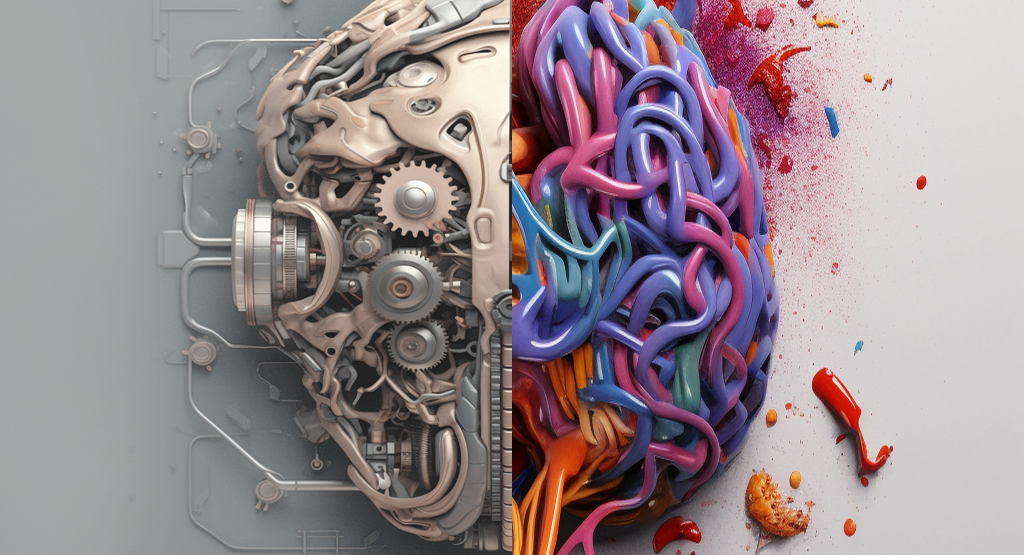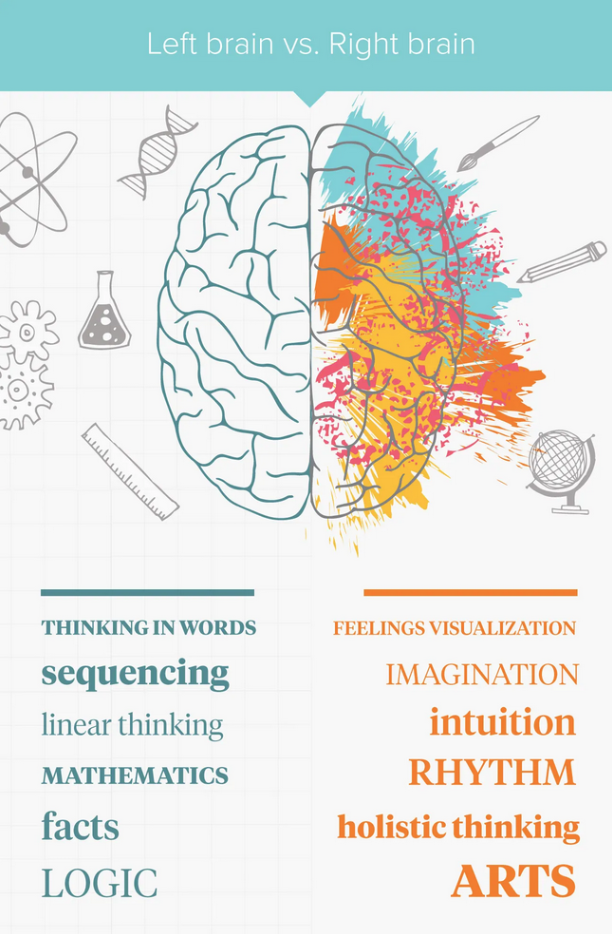The Logic of Imagination
In his 2005 bestseller, A Whole New Mind, Dan Pink argued that the 21st century would be ruled by right-brainers. He listed six right-brained aptitudes, what he called the “Six Senses” that would become essential in the new century: Design, Story, Symphony (Big-Picture Thinking), Empathy, Play, and Meaning.
Nearly 20 years later, it turns out, he was absolutely right. With the rise of AI and increased pressures on outsourcing, we can no longer rely on traditionally left-brained skills such as computer coding and linear thinking. Now, everywhere you turn you’ll see right-brained faculties touted as essential in business and life—‘Design that will change your life’, ‘Helping you tell your story’, ‘Start with empathy’. It’s no wonder that, in 2020, the World Economic Forum labeled as their number one skill of the 21st century complex problem solving, basically a combination of Pink’s Six Right-Brained Senses.
There’s only one problem: These supposedly right-brained faculties are not right-brained.
Let me explain.
Right-Brain/Left-Brain
The premise is that the brain is divided into two hemispheres—a right and left brain. In the 1960s psychologist Roger W. Sperry found that each side of the brain functions in different ways, thus giving us two styles of thinking. The left brain provides logic, reason, math, and language; the right brain provides imagination, holistic thinking, intuition, and art.
This is how we get the fascinating image of the two sides of the brain with the left being a hodgepodge of mechanical equipment and the right being a Jackson Pollock painting. The inference is that everyone has a dominant side of the brain and so everyone is either ‘left-brained’ or ‘right-brained’. Those who are good at math and mechanics are left-brained and those who are good at art and creativity are right-brained.
Pink’s argument is that right-brained people will dominate the new century because the most important faculties—his Six Senses—are right-brained-oriented. But is it so black-and-white?
Consider design as the prime example.
We tend to think of designers as artistic types with Star Trek-looking creatures with pink hair and nose rings. Anyone who looks like that must be creative. Also, anyone who doesn’t look like that must not be a good designer. So, we separate and isolate. We let Star Trek characters do the creative work in colorful open spaces while the rest of us are locked up in gray left-brained cubicles so we can sort emails.
I can’t imagine a more dreadful approach.
A Whole-Brain Approach
The fact is that the process of design cannot be reduced to only right-brained thinking. Design, like the other faculties, is a whole-brain endeavor. And it can only do harm to relegate a certain type of person for design work.
Consider the famous Stanford D-School Design Thinking Process. In it, a team works through five main stages of design from Empathizing to Defining, to Ideating, to Prototyping and finally to Testing. Now, even without digging into each in depth, it is clear that there are places for analytical thinking in the process and there are places for synthesis; there are places for logic and there a places for imagination.
Both right and left-brain thinking are essential in the process. More importantly, each kind of thinking is dependent upon the other kind of thinking to be successful at all. Empathizing is no use unless you can pare down the observations in a systematic way. Ideation can be of little use unless you can assess the quality of the ideas. As G.K. Chesterton once said, “The object of opening the mind, as of opening the mouth, is to shut it again on something solid.”
The Double Diamond Framework shows this in stark contrast. The diamonds of Double Diamond fame are formed by the opening up on one side with analysis and the closing down on the other side of synthesis. Right-brain thinking opens up the diamond and left-brain thinking closes it down.
Conclusion
There’s no doubt that faculties like Design, Storytelling, and Empathy are becoming more important in the age of AI. But it’s not because they are right-brained. They are becoming more important because they are whole-brained. Ultimately, the key to staying relevant in the AI age is not to dye our hair pink and get nose rings; it’s to learn how to use both sides of our brains, to integrate. Only then can we reach our potential.





